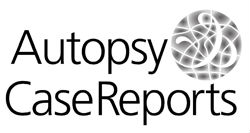The importance of autopsies despite the declining number amidst the COVID-19 pandemic
Monika Bhatt; Mani MovaseghiGargari; Momal T Chand
Abstract
Dear Editor:
Reported for the first time in Wuhan, China in late 2019, coronavirus disease 2019 (COVID-19) has since taken the world by storm.
As the number of COVID-19 infections has soared throughout the world, no industry has been spared from its effects. The healthcare field has faced a substantial burden from the pandemic. In addition to impacting frontline workers, the pandemic has also put a strain on undergraduate and graduate medical education,
An autopsy is the external and internal investigation of the deceased followed by microscopic evaluation by a pathologist of tissue representatives from the internal organs. The purpose of hospital autopsies performed by residents in anatomic pathology residency programs, aside from practicing the skills necessary to perform an autopsy, is to elucidate any information that may provide clinical clues about a patient’s demise that may not have been known prior to the patient’s death.
For years, autopsies have consistently played a crucial role in medicine. They have deepened and continue to deepen our understanding of the pathophysiology of innumerable disease processes
Despite their significant contributions to science and medicine, the importance of performing autopsies in pathology residency training was questioned in the 2014 meeting of the Association of Pathology Chairs as the steadily decreasing autopsy rate was perceived as an indication to replace autopsy training with newer topics like molecular genetics and informatics.
Even with the reinstated importance of autopsies, autopsy rates have steadily decreased, creating concern for pathology residencies across the nation from the uncertainty of whether their residents will be able to achieve the number of autopsies mandated by ACGME. While the overall number of annual deaths has increased from 1.9 to 2.2 million in the United States from 1972 to 1994, the rate of autopsies has declined from 19.1 to 9.4%, respectively.
To help programs mitigate concerns about meeting the required autopsy number during pathology residency, ACGME permits two residents to share an autopsy.
Some relief came in August 2020, when ACGME assessed the current state of affairs and lowered the autopsy number pathology residents are required to complete during their residency training from 50 to 30.
Consequently, their ability to enhance our understanding of the pathophysiology of diseases and their sustained importance as the gold standard in determining the most accurate and precise cause of death illustrates the continued importance of autopsies in medicine. The value they provide emphasizes why it should continue to remain a requirement for pathology residency and be incorporated in the anatomic pathology board exam. Failure to adequately provide high-quality autopsy training to pathology resident physicians will deprive them of imperative skills required to become well-rounded pathologists and deprive the healthcare system of a key asset in comprehending disease processes and determining cause of death.
References
1 Kumar J, Makheja K, Rahul F, et al. Long-term neurological impact of COVID-19. Cureus. 2021;13(9):e18131.
2 Nawaz M, Rivera E, Vinayak S, et al. Comparison of sexual function before and after COVID-19 infection in female patients. Cureus. 2021;13(9):e18156.
3 Mabis C, Chand MT, Miller S. Utilizing electronic resources to promote your residency program. Autops Case Rep. 2021;11:e2021286.
4 Cao W. Autopsy education and rate: effect of the COVID-19 pandemic. RI Med J. 2021;104(10):21-5.
5 Shojania KG, Burton EC. The vanishing nonforensic autopsy. N Engl J Med. 2008;358(9):873-5.
6 Inai K, Noriki S, Kinoshita K, et al. Postmortem CT is more accurate than clinical diagnosis for identifying the immediate cause of death in hospitalized patients: a prospective autopsy-based study. Virchows Arch. 2016;469(1):101-9.
7 Davis GG, Winters GL, Fyfe BS, et al. Report and recommendations of the Association of Pathology Chairs’ Autopsy Working Group. Acad Pathol. 2018;5:2374289518793988.
8 Hamza A. Declining rate of autopsies: implications for anatomic pathology residents. Autops Case Rep. 2017;7(4):1-2.
9 Nemetz PN, Tanglos E, Sands LP, Fisher WP Jr, Newman WP 3rd, Burton EC. Attitudes toward the autopsy: an 8-state survey. MedGenMed. 2006;8(3):80. PMid:17406199.
10 Waidhauser J, Martin B, Trepel M, Märkl B. Can low autopsy rates be increased? Yes, we can! Should postmortem examinations in oncology be performed? Yes, we should! A postmortem analysis of oncological cases. Virchows Arch. 2021;478(2):301-8.
11 Siefring C, Sachire J, Thomas D, Allenby P. Exposure reduction in COVID-19 autopsies. Autops Case Rep. 2020;10(3):e2020193.
12 The American Board of Pathology (ABPath). New certification requirement for autopsies [Internet]. Tampa: ABPath; 2020 [cited 2020 Aug 31]. Available from:
Submitted date:
03/01/2022
Reviewed date:
03/15/2022
Publication date:
04/20/2022

